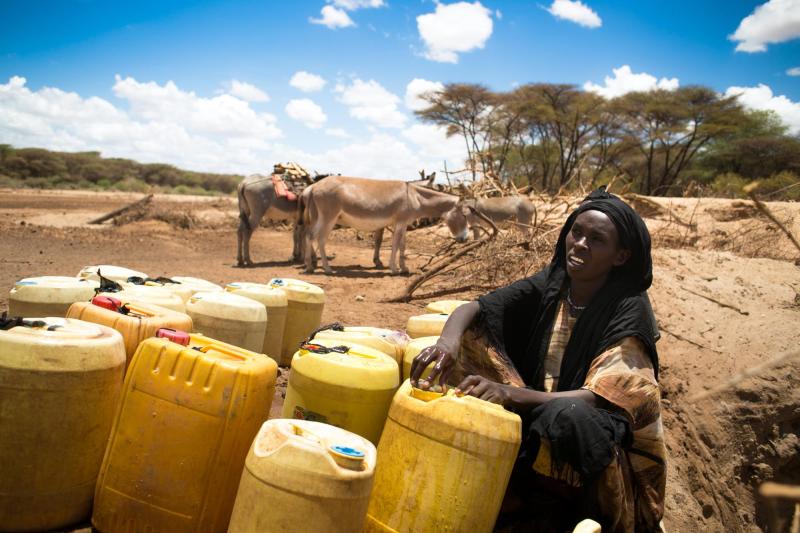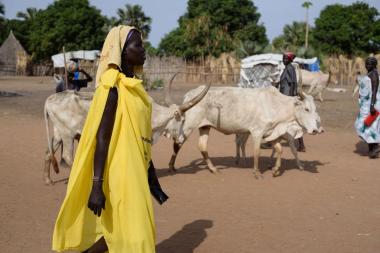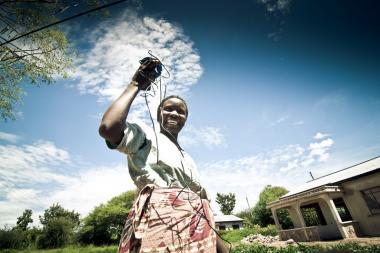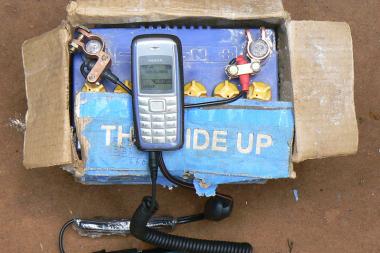Blog
Social Media: Potential to Harness the Power of Influencers for Impactful Campaigns in the Drylands
This blog reflects on our recent webinar in which we explored how pastoralists use social media, what the recent trends are in mobile use, and how these are informing livelihoods in dryland regions.
“Do you have knowledge of what kind of information is shared among communities? Are there emerging topics linked to livelihoods, risk, linkages to markets? Who is exchanging drylands-specific information?” asked one participant.
Questions flooded the chat during our recent webinar on Pastoralists on Social Media: Potential to Harness the Power of Influencers for Impactful Campaigns hosted by the SPARC Innovation Research Facility (IRF) in January. The virtual knowledge-sharing event saw SPARC IRF partners digital platform Wowzi and digital agency Nendo sharing insights from their ongoing work with an international group of stakeholders engaged in drylands across East and West Africa.
The SPARC IRF has partnered with these two organisations to gather evidence on the social media engagement of pastoralists and farmers in the drylands of Kenya, Uganda, Tanzania, and Nigeria. A key objective of our research is to explore how social media use can be unlocked for information and products campaigns, and potentially generate new streams of income for drylands communities.
The event promised a vibrant discussion on digital connectivity in the drylands, pastoralist social media influencers, digital behaviour change campaigns and more.
Our work is buoyed by the findings of a SPARC scoping study Innovations for Pastoralists and Agro-Pastoralists in Fragile and Conflict-Affected Settings (2022), which found that “Innovations that are engineered by communities, institutions and businesses, and social enterprises do exist, but they have smaller networks to external audiences."
Role of women and youth in innovations for drylands
The paper also asked what role pastoralist women and young people under 25 years play in enhancing the resilience of pastoral livelihoods, what innovations are relevant to women and youth, and to what extent these innovations are responsive and/or transformative with respect to gender and age.
Chloe Stull-Lane, Innovation Director, introduced the SPARC IRF as a co-creator, curator and broker of evidence on innovation and innovation systems that build resilience in the East and West African drylands. These innovations are hosted on our interactive digital resource the SPARC Innovation Dashboard. Our research is directed towards innovation in practice, documenting promising digital and governance innovations, exploring the factors that make them effective, and their transferability and adaptability.
This is the basis of SPARC’s engagement with Nendo, researchers, marketers and strategists focusing on internet penetration, mobile network quality, device affordability, gender-based access to mobile phones and the internet, with a qualitative evaluation of audiences and conversations into a snapshot of social media trends in pastoralist Kenya.
During the webinar, Mark Kaigwa, Nendo Co-Founder and Managing Director, offered hypotheses on digital, social and mobile use in the drylands, offering invaluable insights drawn from research for SPARC and Nendo’s earlier report The State of Mobile Data 2019. He emphasised that massive investments have been made in connectivity on the African continent.
Quoting the PWC Entertainment and Media Outlook 2018-2022 in his presentation, Mr Kaigwa highlighted the projection that 1 Billion gigabytes of data would be consumed in Africa in 2022, with smartphones driving 60% of that traffic on a continent where digital transformation is inevitable.
Challenges to harnessing digital innovation to support pastoralists
He added that the question is not whether digital, social media and mobile tech are relevant on the African continent given current low connectivity, especially in the drylands and rural areas. We should instead focus on how to harness the potential of the digital resources available today and prepare for the fast-approaching opportunities as connectivity and rural electrification rise.
Nendo’s optimistic outlook sparked a vibrant discussion in the webinar chat, with one participant positing, “We have just completed the 1st round of interviews of pastoralists in 6 states in Nigeria for our IDRC-SPARC project…we found that very few pastoralists have phones at all. In one location in Kano State, only 4 respondents had mobiles, all of them male. 70% of our respondents were women and a large majority have never heard of WhatsApp, Facebook.” [The project interviewed 50 pastoralists in the Shadawa settlement in Kano State. Source:IDRC-SPARC]
Another added that the political economy of the countries being studied needed to be considered closely, giving voice to the varied nature of constraints to digital technology and social media access in different territories. Regulatory and cultural factors often serve as inhibitors to the uptake of digital tools, and inclusive access to digital devices and data bundles.
However, even with these constraints, the digital landscape and social media trends on the continent warrant ongoing focus, with a special emphasis on Fragile and Conflict-Affected Settings and drylands, and the opportunities that social media could hold for them.
Our research findings revealed that with access to digital connectivity, users in drylands behaved just like their counterparts in more densely populated, urban areas. They are on WhatsApp, Facebook and TikTok just like many others around the globe.
The power of ‘nano’ influencers in drylands
But whereas celebrities may first come to mind when we think of influencers, another SPARC IRF partner, Wowzi, is offering a vastly different picture. The tech company is leveraging the power of nano influencers to build effective social media campaigns on the African continent. A nano influencer is an everyday social media user with between 100 to 1,000 followers. Mike Otieno, Wowzi co-founder, explained that in low-trust environments, digital messaging from a good friend or a member of one’s own community is likely to carry more weight than a call to action from a celebrity with whom an individual has no direct relationship.
SPARC is working with Wowzi to pilot two social media campaigns for social enterprises Savanna Circuit Technologies and the Ushanga Initiative in anticipation that this case study could situate Wowzi’s innovation, a nano-influencer marketing platform, in global policy debates and discussions on platform labour, digital jobs and dignified gig work. The findings will guide social enterprises exploring new or scaled operations in drylands on opportunities to unlock new income opportunities for agro-pastoralists while designing for inclusion.
Can social media be used as a tool to integrate indigenous knowledge in climate action?
During the webinar, Alexis Teyie, Wowzi Research Lead at SPARC, shared further questions SPARC aims to explore, such as whether social media could be a viable tool in the integration of indigenous knowledge in weather and climate mitigation and action; and whether social media could provide a different way to identify and activate ‘nodes’ in communities and operationalise social capital. For example, social media engagement by pastoralists in drylands could help to debunk some of the misconceptions around often-misunderstood pastoralist communities, while also offering viable opportunities for digital jobs and gig work. Through SPARC’s pilots with Wowzi, we are exploring how residents in the drylands or people with a heritage in these communities can leverage their identity to shape conversations and behaviour as social media influencers.
Mark Redwood, SPARC Executive Director, also highlighted that innovation is happening daily and emphasised the need to explore what innovations hold the most promise, and whether those innovations can be replicated. As we expected, the event raised more questions than answers. Looking ahead, SPARC and Wowzi are excited to launch their social media campaign pilots for Savanna Circuit and Ushanga, and develop a SPARC Social Media Campaign Toolkit as a useful guide for a range of stakeholders.
Don’t miss the webinar on YouTube here, and read these articles by SPARC Wowzi Research Lead Alexis Teyie on social media trends in pastoralist regions of Kenya and learning lessons from how pastoralists in East and West Africa are using technology.
If you have an innovation that you would like us to know about, please get in touch via our dashboard here.

Hawo Holale digs ‘shallow wells’ into the river bed and scoop out the filthy, mud-coloured groundwater with domestic utensils, then lug it on donkey carts to villages, Ewaso Ngiro river basin, Kenya
Credit Image by Denis Onyodi/KRCS - CC BY-NC 2.0


